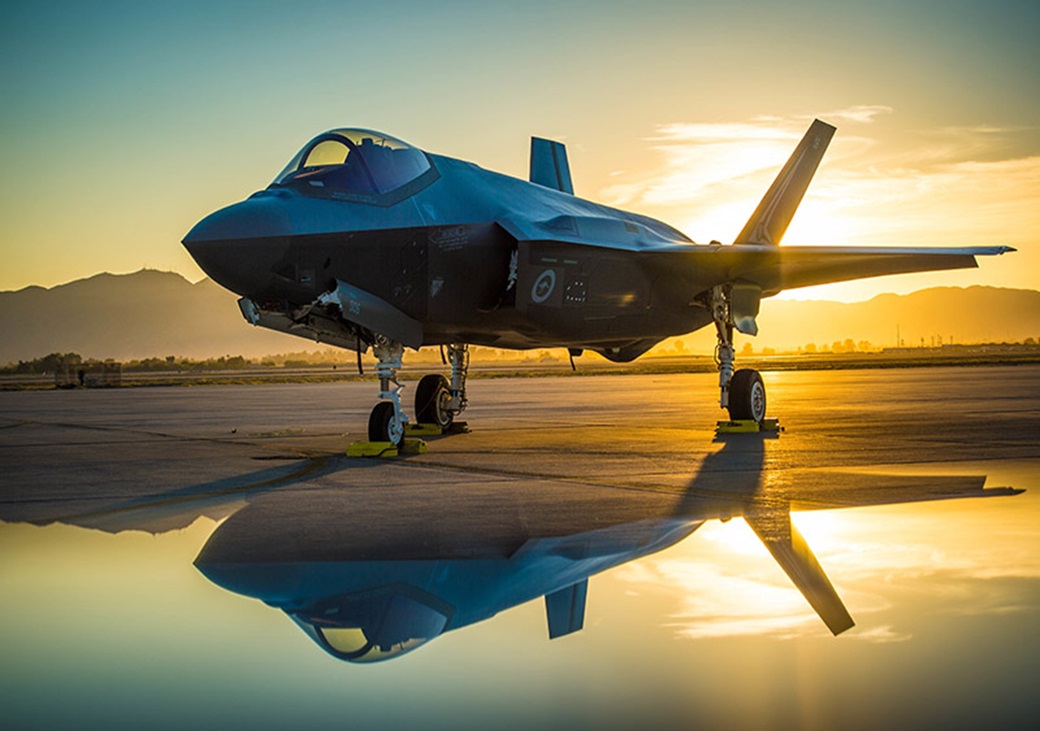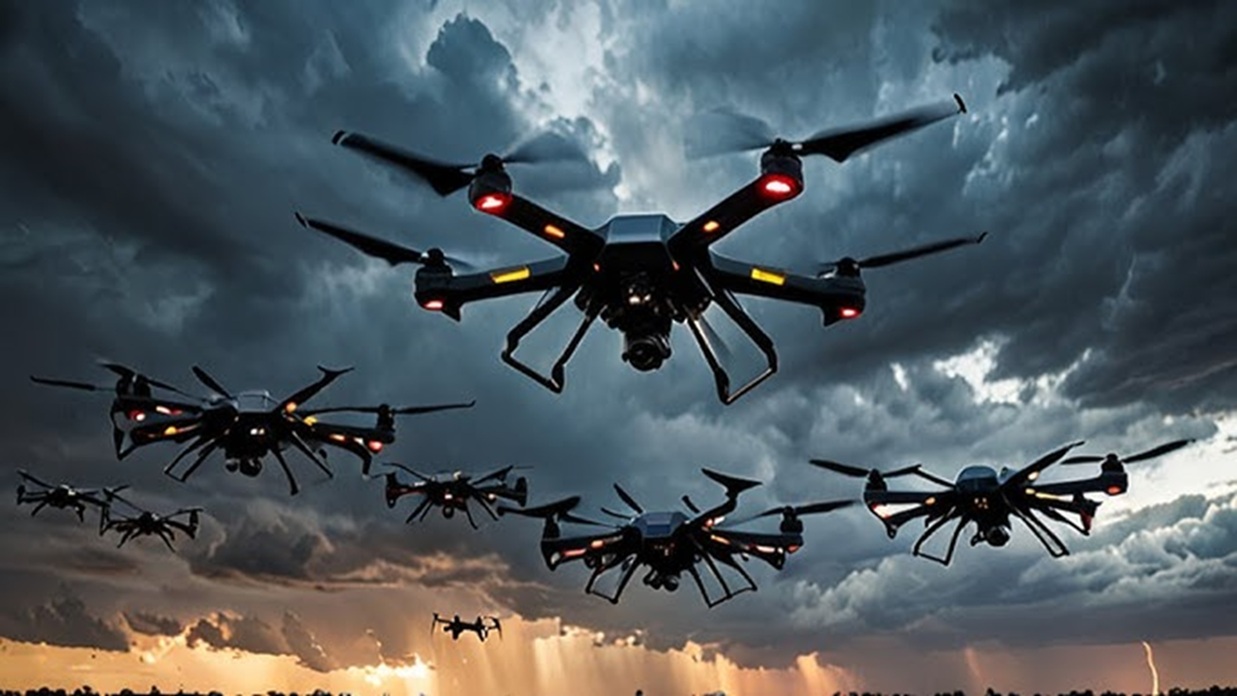The Lockheed Martin F-35 Lightning II is a single-seated, single-engine, stealth multirole combat stealth aircraft. It is designed for air superiority, ground attack, electronic warfare and intelligence gathering.
Hours before the US Defence Secretary Robert M. Gates’s visit to Beijing in January 2011 aimed at improving defence ties, China’s military conducted a test flight of a new stealth fighter jet. Surprisingly, Gates wasn’t aware of the usual Chinese military’s show of strength gimmick during any important meeting. He enquired with President Hu Jintao, if this was due to his visit. But Hu Jintao kept a poker face, feigning any awareness.
The semi-stealth fighter in question was J-20. It’s the same fighter that has a geometrical resemblance to the long-defunct Russian MiG 1.44 program. But J-20’s closer inspection reveals the incorporation of Lockheed Martin’s F-22 and F-35 features. All thanks to Chinese businessman Su Bin, who stole thousands of Lockheed Martin files and supplied them to the Chinese military. He got away with just 46 months of jail term, making the Chinese military take a giant technological leap.
However, neither Su Bin’s hacking techniques nor Lockheed Martin’s lack of safeguarding its data is any of India’s concerns. India in general and the Indian Air Force (IAF) in particular are concerned because the same fighters are now getting deployed at Shigatse’s dual-use airport in Tibet, just 150 km from the Indian state of Sikkim. China is also making a pitch for the Pakistani Air Force to acquire an unproven F-35 clone, the J-31 fighter jet.
People’s Liberation Army Air Force (PLAAF) currently has over 200 J-20s in service. But with a 100-per-year production capacity, they would add another 800 J-20s to their fleet in the next eight years. That means by 2032 the number of J-20 squadrons would alone be over 45 with a fleet size of 1000. A number greater than all the fighters in the IAF’s inventory.
The Number Game
With the planned ₹5,300 crore, 50 years life upgrade, the IAF will be able to extend the life of 61 MiG-29UPG until 2035. One must remember that the MiG-29’s first life extension from 25 to 40 years was undertaken in the mid-2000s. On the other hand, with the 13-year-long ongoing upgrade and the purchase of 12 used Mirage-2000s from Qatar, the IAF may achieve 47 serviceable Mirage-2000s lasting till the late 2030s. However, the serviceability rate of these vintage aircraft has always been a concern.
The IAF also has six SEPECAT Jaguar squadrons. Out of 140 aircraft acquired starting from 1979, only 117 are left in the inventory and struggling to maintain the serviceability rate. To tide over the situation India bought 31 decommissioned airframes, engines, and spare parts in 2018. In the same year, HAL started an upgrade of various weapon, navigation, and avionics suites. Currently, the IAF is seeking nine more used Jaguars from the Royal Air Force (RAF). The whole game plan is to extend the life of 117 Jaguars beyond 2035.
Presently, there are 15 Su-30MKI (as reported by Janes), 6 Jaguars, 2 MiG-21 Bison, 3 Mirage-2000, 3 MiG-29UPG, 2 Rafale, and 2 Light Combat Aircraft Tejas Mk1 squadrons in the IAF. This takes the number of fighter squadrons in the IAF to 33. But one must keep in mind that Su-30MKI squadron numbers have been bolstered from 12 to 15 using the same pool of 263 fighters.
The squadron number had bottomed out at 29 in 2020. In 2025 the remaining two MiG-21 Bison squadrons with 40 odd aircraft will be numberplated, taking the squadron strength back to 31. The additional 21 MiG-29UPG and 12 Su-30MKI orders the government of India announced in 2020 would have arrested that slide. However, the government eventually cleared only 12 Su-30MKI in September 2023.
The Timeline
The Tejas program has given the IAF some breathing space. The IAF had ordered 40 indigenous Tejas Mk-1 fighter jets and taken deliveries of 34. The IAF also ordered 83 advanced Tejas Mk-1A. An additional order of 97 Tejas Mk-1A is pending with the Cabinet Committee on Security (CCS) for approval. The deliveries of Mk-1A are likely to commence by July 2024.
At the production rate of 24 aircraft per year, Hindustan Aeronautics Limited (HAL) is likely to complete the deliveries of 83 fighters by the end of 2028. The additional 97 fighters, if approved before 2028, would take another four years for the deliveries, i.e. 2032. The impressive 180 Tejas Mk-1A numbers would form an additional 10 fighter squadrons, reducing the squadron shortfall drastically. All these calculations would work out provided the HAL keeps up its promise of 24 deliveries per year.
Tejas Mk-2 was scheduled to make a rollout in 2023, however, it has been pushed forward to 2026. There are several reasons for the delay, however mainly it is due to an increase in the indigenous components from 65% to 80%. The first flight is expected to take to the skies by 2028 and production to start by 2030. At present the order book stands at 108 Mk-2s, however, the government of India has indicated that the numbers may be bumped up to 200.
India’s ₹15,000 crore 5+ Gen Advanced Medium Combat Aircraft (AMCA) stealth fighter jet program was cleared by CCS in March 2024. The first flight is likely to be by early 2029 and production by 2034-35. The IAF is likely to acquire a total of seven AMCA squadrons — two AMCA Mk1 and five AMCA Mk2.
The Acquisition Plan
Keeping in mind the depleted strength of the fighter squadrons, the IAF floated a Request for Information (RFI) in 2004 for the purchase of 126, 4.5 Gen, Medium Multi-Role Combat Aircraft (MMRCA). The whole proposal remained on paper for a decade. Finally, the RFI was scrapped in April 2015 when the government informed that they intended to buy 36 Rafale fighter jets from France in fly-away condition. In 2018 the MMRCA appeared in a new avatar of Multi Role Fighter Aircraft (MRFA). This time the fighter numbers were pitched at 114. Eight Original Equipment Manufacturers (OEM) are in the fray.
The government of India has learned from the mistakes of acquiring Mirage-2000 and Rafale fighter jets in fly-away condition. In the latest move, the Indian government has made a policy switch. Now the 114 MRFA deal would be only with a vendor who is ready to set up the manufacturing facility for the entire aircraft in India. The manufacturing would be in a joint venture with a local partner along with a complete technology transfer. An announcement in this regard should be made soon.
India’s Gen 5+ Stealth Dream
From the foregoing, it is amply clear that India’s 5th Gen aircraft and stealth fighter dream would not fructify for over a decade, even if all the timelines were met.
Off late a marketing blitz has come to light. Several articles have appeared in the Western media about how and why India should buy Lockheed Martin’s F-21 or McDonnell Douglas’s F-15EX. There are a few articles also appealing to the US administration to sell F-35 stealth fighters to India. The US has barred the countries possessing the Russian S-400 missile defence system from procuring F-35. This includes India and Turkey.
While the F-21 is based on the mid-1970s design of the F-16, the first F-15 was built in 1972. Both aircraft are very capable, however, these requirements could be met by the ongoing Tejas Mk-2 program and Su-30MKI. Therefore, India should not consider any US fighter other than the F-35 Joint Strike Fighter.
A recent statement by the Indian Defence Minister Rajnath Singh is noteworthy. While commenting on China’s third aircraft carrier he stated that India would soon commence building its third aircraft carrier and plans are afoot to make five or six aircraft carriers. This is a very interesting statement. Was he hinting at Japan’s Kaga helicopter carrier type of ships along with F-35B Lightning II short take-off and vertical landing (STOVL) fighters? Japan has recently converted a helicopter carrier Kaga into an aircraft carrier. Kaga’s sister ship Izumo would also be ready in the new role by 2027.
Interestingly, Japan has 42 F-35Bs on order for this purpose. Since India has decided to have a local manufacturing of MRFA. If the US allows India to manufacture F-35s domestically, it would be a big boost to the F-35 program. It could also bring the cost of the F-35 production and operations down.
The IAF cannot wait for a decade to have 5th-Gen stealth fighters in its inventory when the enemy is lurking at the border. By the time the IAF gets Tejas Mk-2 or AMCA, China would have stolen 6th-Gen fighter designs like — NGAD, Tempest, or FCAS, reverse-engineered and mass-produced them.
The Win-Win Proposition
An F-35 production line in India could be a far-fetched but worthwhile idea. The United Arab Emirates (UAE) cancelled an order of fifty F-35 orders in 2021. India could look at acquiring similar numbers as part of MRFA. This would enhance the IAF capabilities while safeguarding India from the usual American threat of sanctions.
The F-35 production is severely affected due to the pending Technology Refresh 3 (TR-3) upgrade. India’s trained and huge talent pool would come in very handy in resolving present and future issues. The local production would also facilitate the localization of spares and components, F135 engine labour issues, as well as provide services to other regional operators. Last but not least even a partial technology transfer would be a great learning experience for India’s future fighter jet programs. This proposition is a win-win for both India and the USA and is worthy of serious thought.
Disclaimer: The views and opinions expressed by the author do not necessarily reflect the views of the Government of India and Defence Research and Studies
Article Courtesy: Chanakya Forum
Title image courtesy: Lockheed Martin
Disclaimer: The views and opinions expressed by the author do not necessarily reflect the views of the Government of India and Defence Research and Studies







